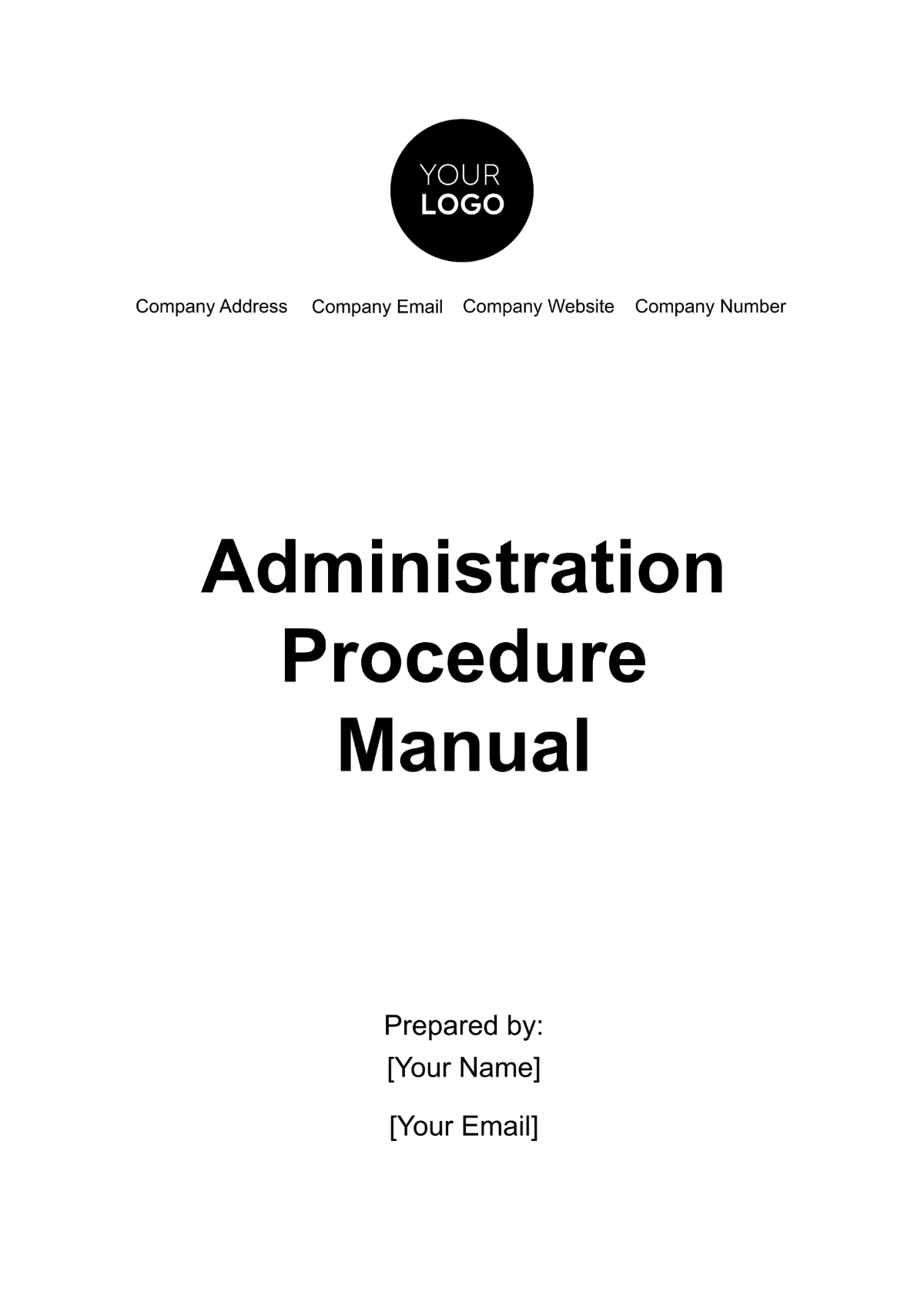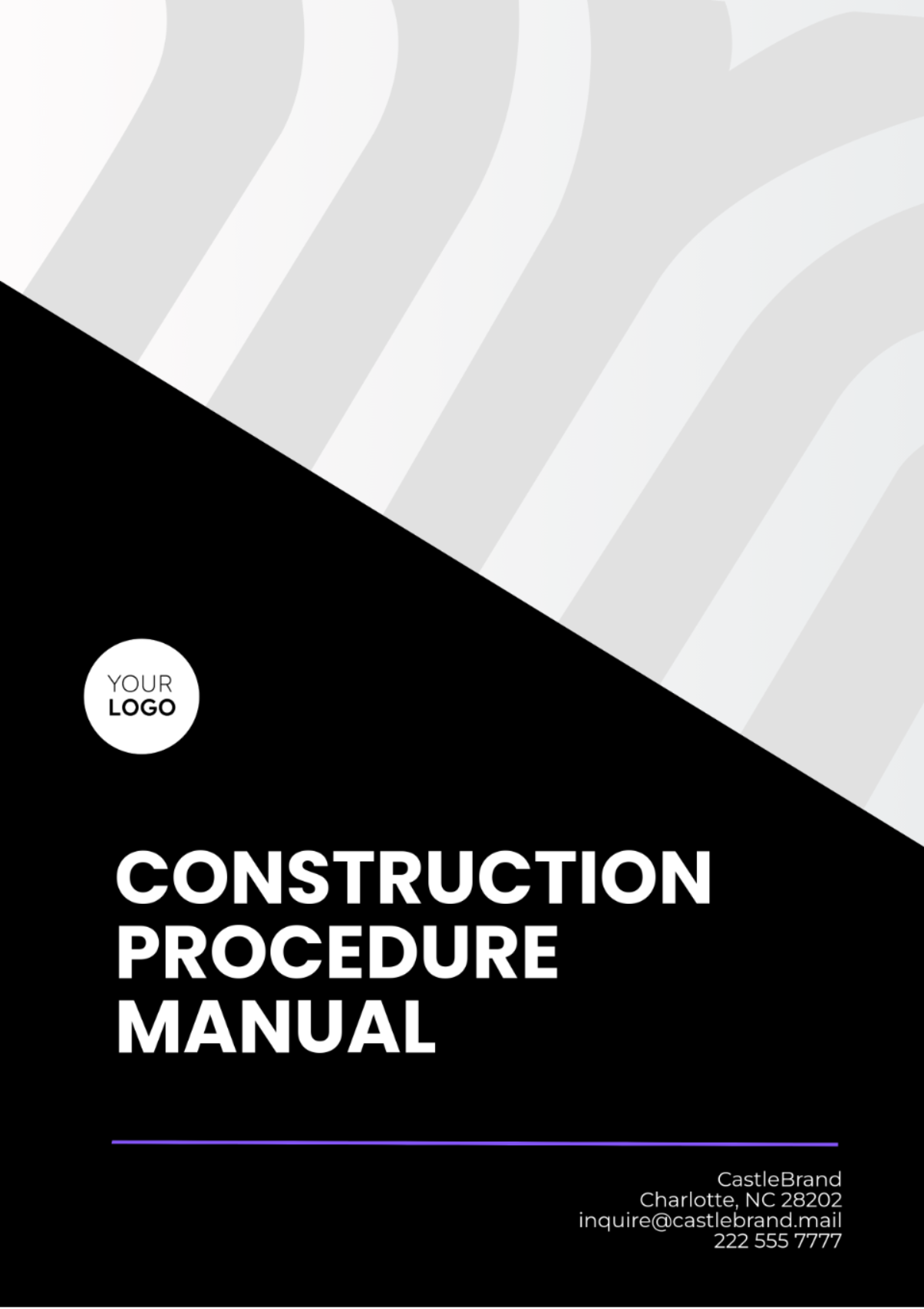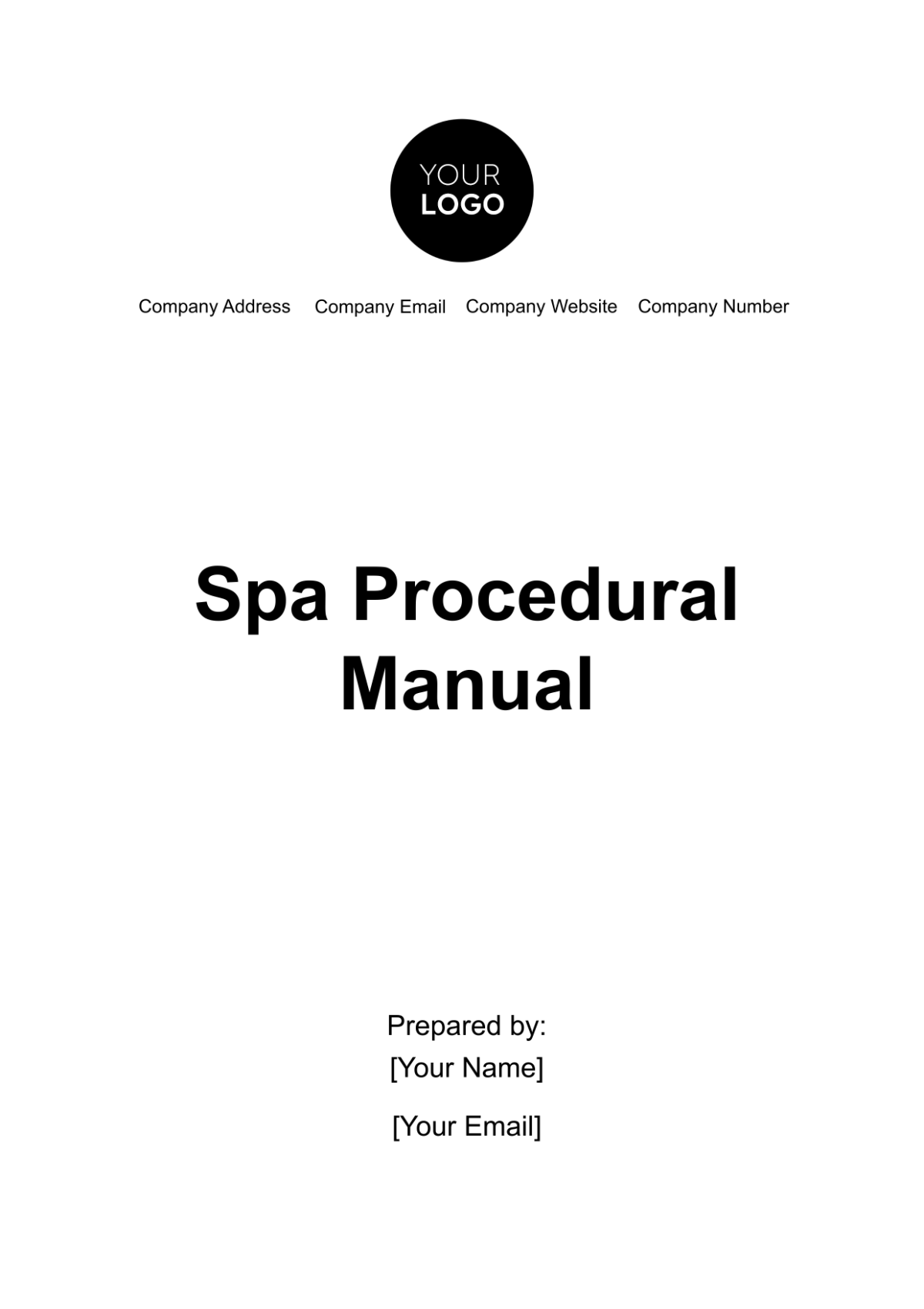ADMIN PROCEDURE MANUAL
Prepared By: | [YOUR NAME] |
|---|---|
Company: | [YOUR COMPANY NAME] |
Department: | [YOUR DEPARTMENT] |
Date: | [DATE] |
I. Introduction
Welcome to the Admin Procedure Manual of [YOUR COMPANY NAME]. This manual serves as a comprehensive guide for all administrative procedures within the organization. It is designed to ensure consistency, efficiency, and compliance across all departments. By adhering to the guidelines outlined in this manual, [YOUR DEPARTMENT] can effectively carry out its administrative duties.
In this section, we provide an overview of the purpose of this manual, its scope, and how to use it effectively. Whether you are a new employee seeking guidance or a seasoned administrator looking for a refresher, this manual is your go-to resource for all administrative procedures.
II. Administrative Policies and Procedures
A. [Your Company Name] Mission and Values
At [YOUR COMPANY NAME], we are committed to [MISSION STATEMENT], Our values of [Value 1], [Value 2], and [Value 3] guide our actions and decisions in all administrative tasks. By upholding these principles, we contribute to the overall success of the organization.
B. Organizational Structure
[YOUR COMPANY NAME] operates under a hierarchical structure to ensure efficient communication and accountability. Departments are organized based on functions, with clear reporting lines and responsibilities. Refer to the organizational chart provided in Appendix A for a visual representation of the structure.
C. Roles and Responsibilities
1. YOUR POSITION
A [YOUR POSITION], you play a crucial role in overseeing [YOUR DEPARTMENT] and ensuring smooth administrative operations. Your responsibilities include [RESPONSIBILITY]. For detailed information on your duties, refer to the job description provided by the HR department.
2. OTHER POSITIONS
In addition to[YOUR POSITION], there are several other key roles within the administrative team. These roles include [ROLE]. Each role has specific responsibilities that contribute to the overall functioning of the department.
III. Administrative Procedures
A. Communication
Effective communication is essential for collaboration and productivity within [YOUR COMPANY NAME]. Whether it's internal communication among team members or external communication with clients and partners, clear and concise messaging is key.
1. Email Etiquette
When communicating via email, adhere to the following etiquette guidelines:
Use clear and descriptive subject lines.
Keep emails concise and to the point.
Use professional language and tone.
Proofread emails for grammar and spelling errors before sending.
Respond to emails promptly, even if it's just to acknowledge receipt.
2. Meeting Protocol
Meetings are a vital part of [YOUR COMPANY NAME] communication strategy. To ensure meetings are productive, follow these protocols:
Set clear objectives and agendas for each meeting.
Invite only necessary participants to avoid overcrowding.
Start and end meetings on time.
Encourage active participation and input from all attendees.
Assign action items and follow up on progress in subsequent meetings.
B. Documentation and Record Keeping
Accurate documentation and record-keeping are essential for maintaining transparency and accountability within [YOUR COMPANY NAME]. All administrative activities should be properly documented and stored for future reference.
1. Filing System
Maintain a systematic filing system for organizing documents both in physical and digital formats. Consider organizing files alphabetically, by category, or by date for easy retrieval.
2. Data Security
Protect sensitive information by implementing robust data security measures. This includes:
Restricting access to confidential documents.
Encrypting electronic files.
Regularly backing up data to prevent loss or corruption.
Educating employees on data security best practices.
IV. Training and Development
Continuous training and development are crucial for enhancing the skills and knowledge of [YOUR DEPARTMENT] team members. By investing in professional growth, we ensure that our employees are equipped to handle their responsibilities effectively and adapt to evolving job requirements.
A. Onboarding Process
The onboarding process is the first step in integrating new employees into [YOUR COMPANY] culture and operations. It involves providing them with the necessary tools, resources, and training to excel in their roles. Key components of the onboarding process include:
Introducing new hires to the company's mission, values, and policies.
Providing an overview of job responsibilities and expectations.
Conducting orientation sessions on workplace procedures and protocols.
Assigning mentors or buddies to help new employees acclimate to their roles.
B. Professional Development Programs
Encourage employees to participate in professional development programs to enhance their skills and knowledge. These programs may include:
Workshops and seminars on relevant topics.
Online courses or certifications.
Cross-training opportunities to gain experience in different areas.
Mentorship programs pairing junior employees with seasoned professionals.
Reimbursement for external training or educational expenses.
V. Performance Evaluation
Regular performance evaluations are essential for providing feedback, identifying areas for improvement, and recognizing achievements. [YOUR DEPARTMENT] follows a structured approach to performance evaluation to ensure fairness and consistency.
A. Evaluation Criteria
Performance evaluations are based on predefined criteria tailored to each employee's role and responsibilities. These criteria may include:
Quality of work and attention to detail.
Communication and collaboration skills.
Initiative and problem-solving abilities.
Adherence to deadlines and project milestones.
Alignment with [YOUR COMPANY] values and goals.
B. Feedback and Development Plans
After conducting performance evaluations, managers provide constructive feedback to employees and collaborate with them to create development plans. These plans outline specific goals, objectives, and action steps for improvement. Regular check-ins throughout the year help track progress and make adjustments as needed.
VI. Maintenance and Updates
Regular maintenance and updates are essential to ensure that the Admin Procedure Manual remains relevant and effective. [YOUR DEPARTMENT] is responsible for reviewing and revising the manual as needed to reflect changes in policies, procedures, and best practices.
A. Review Schedule
Establish a schedule for reviewing the Admin Procedure Manual to ensure that it remains up-to-date. Consider conducting reviews on a quarterly or biannual basis, or as major changes occur within the organization.
B. Revision Process
When updating the manual, follow a structured revision process to maintain consistency and accuracy. This process may include:
Identifying areas for revision based on feedback from users or changes in policies.
Reviewing and updating content as necessary, ensuring clarity and relevance.
Obtaining approval from relevant stakeholders, such as department heads or the executive team, before finalizing changes.
Communicating updates to all employees and providing training if significant changes are made.
VII. Glossary
To facilitate understanding of the Admin Procedure Manual, a glossary of key terms and acronyms is provided below:
Admin: Abbreviation for administration, referring to the management of organizational tasks and processes.
Policy: Official guidelines or rules established by [YOUR COMPANY] to govern behavior and decision-making.
Procedure: Instructions for specific tasks or activities.
HR: Human Resources, the department responsible for managing personnel-related matters.
KPI: Key Performance Indicator, a measurable value used to evaluate the effectiveness of an organization or individual in achieving objectives.
SOP: Standard Operating Procedure, a set of step-by-step instructions for carrying out routine tasks or processes.
GDPR: General Data Protection Regulation, a regulation in EU law on data protection and privacy.
IT: Information Technology, the use of computers and telecommunications equipment to store, retrieve, transmit, and manipulate data.
ROI: Return on Investment, a measure used to evaluate the profitability of an investment.
SLA: Service Level Agreement, a contract between a service provider and a customer that specifies the level of service expected.
VIII. Acknowledgments
We would like to express our gratitude to all individuals who contributed to the development of the Admin Procedure Manual, including [LIST OF CONTRIBUTORS]. Their expertise and insights have been invaluable in creating a comprehensive resource for [YOUR COMPANY].
IX. Revision History
Version | Date | Description | Revised By |
|---|---|---|---|
1.0 | [DATE] | Initial release of the Admin Procedure Manual | [YOUR NAME] |
1.1 | [DATE] | Updated policies and procedures based on feedback | [YOUR NAME] |
1.2 | [DATE] | Revised formatting and added glossary section | [YOUR NAME] |
2.0 | [DATE] | Major update incorporating new policies and procedures | [YOUR NAME] |
X. Conclusion
The Admin Procedure Manual serves as a valuable resource for [YOUR DEPARTMENT] to navigate administrative tasks effectively and efficiently. By following the guidelines outlined in this manual,[YOUR COMPANY NAME] can uphold its standards of excellence and ensure consistency across all administrative functions.
We encourage all employees to familiarize themselves with the contents of this manual and refer to it whenever they have questions or require guidance on administrative procedures. For any further inquiries or suggestions for improvement, please contact [YOUR NAME] at [YOUR EMAIL].
Thank you for your commitment to maintaining high standards of administrative excellence at [YOUR COMPANY NAME].

















































